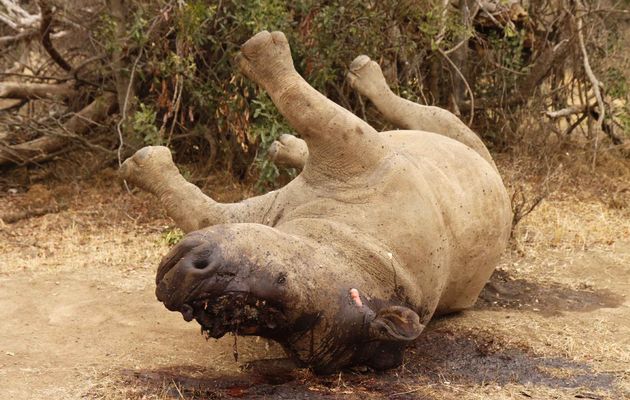In April 2010, the rangers of Cat Tien National park could not save the female Rhino that fell prey to poachers. After this killing, there were no sighting of any Rhino in the park, nor any footmarks, dung. The analysis of all the dung samples collected during 2009-2010 revealed that it was of the same Rhino that was killed in April, 2010.
The rarest Rhino in the world got rarer, according to the annual report by International Rhino Foundation (IRF). The report declares Javan Rhino (Rhinoceros sondaicus) to be extinct in Vietnam and officially Indonesia is only country where it now exists in wild.
The Javan Rhino, also known as lesser One-horned Rhino, is ‘Critically endangered’ in IUCN Red list and not more than 44 individuals are surviving in wild as per the IRF 2010 report. All 44 individuals are found only in the Ujang Kulon National Park of Indonesia. The report says, “Sadly this year, we believe that the last Javan Rhino was poached in Vietnam’s Cat Loc Reserve. In Ujung Kulon, best survey estimates, backed up with camera-trap data, suggest that no more than 44 animals remain in the park. Of these, we suspect that there are only four or five females with breeding potential. ”
Indonesia is the last hope for the Javan Rhino, the rarest large mammal in the world. The utmost priority should be given to the protection of the existing population in Ujung Kulon and also expanding the current population to a second habitat for giving more chances of survival to the species.
Poaching is the greatest threat for the Javan Rhino. The Rhino horn brings extraordinary value in the black market which appeals the poachers easily. In China the horn believed to be cure of many ailments including heart disease, cancer, etc. This baseless believe has been killing Rhinos all over the world. The last Javan Rhinoceros of Vietnam was killed by poachers only in April 2010. It was shot at leg and horn hacked off in the Cat Tien National Park.
This One-Horn Rhino species was widely found in the south-east Asia region just a century back. During Vietnam war, due to easy availability of powerful weapons, Rhinos were killed in large number for their horns in Vietnam. In post war time, the species was believed to be extinct from Vietnam. But 1988, a hunter killed a Javan Rhino in the Cat Tien region of Vietnam. This gave a ray of hope and proved that the species was not extinct in the region. This leads to a survey of the Cat Tien National Park in 1989 that found at least 15 Java Rhino specimens along the Dong Nai River. Despite this discovery, the protection measures in the Cat Tien region was not proper and the population kept on declining majorly due to poaching. In 2000, experts pointed out that the Javan Rhino population in Vietnam might not ever recover. The population stood at just around 3-8, mostly consisting of female without any adult male capable of breeding.
In April 2010, the rangers of Cat Tien National park could not save the female Rhino that fell prey to poachers. After this killing, there were no sighting of any Rhino in the park, nor any footmarks, dung. The analysis of all the dung samples collected during 2009-2010 revealed that it was of the same Rhino that was killed in April, 2010. This is how the story of Javan Rhino ends in Vietnam. The Rhinos in Cat Tien region was a subspecies of Javan Rhino, Rhinoceros sondaicus annamiticus , now extinct. Despite of various protection efforts by various organization this rare species also became the victim of human activities. Very unfortunately the Vietnamese Rhino joined the long list of similar animals that vanished from the beautiful nature.
One of the very scary fact about the Javan Rhino is that captive breeding has not been successful for the animal in zoos till now. There is no captive population in existence to support the wild population. So, now all eyes will be concentrated on the Indonesian Javan Rhino.



Recent Comments